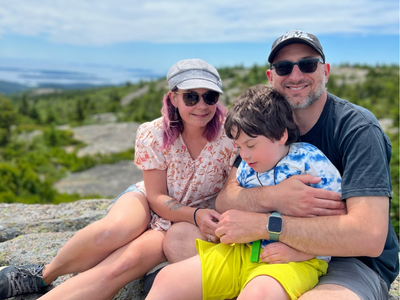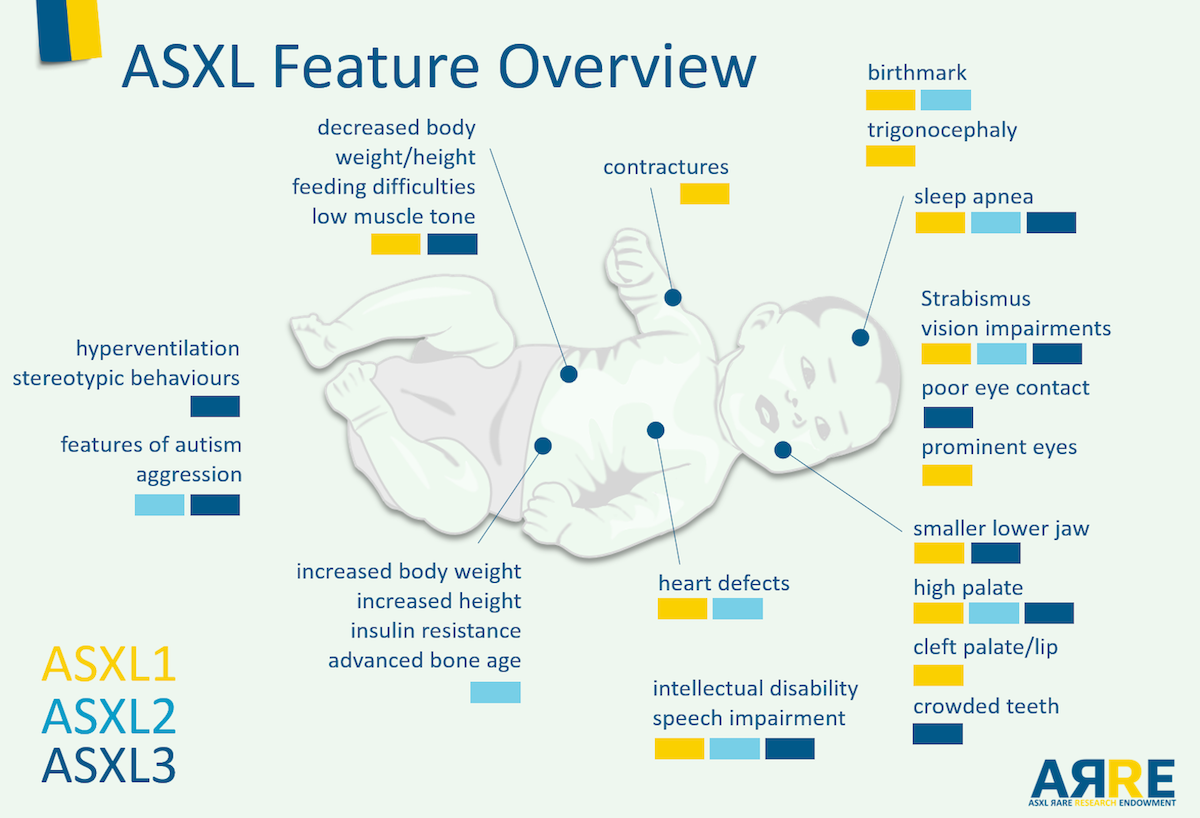ASXL syndromes
Introduction to ASXL-related disorders with Vishnu Cuddapah, MD
There are three ASXL syndromes that are caused by a spontaneous genetic change in one of the three genes: ASXL1, ASXL2, and ASXL3. The genetic change, commonly called a mutation or variant, usually happens randomly around the time of conception. In rare cases, it may be inherited from parents.
Read more about what causes ASXL-related disorders
These three syndromes have some overlapping features as well as features that are unique to each syndrome.
The three ASXL syndromes are:
Bohring-Opitz Syndrome (BOS) - mutation in the ASXL1 gene
Shashi-Pena Syndrome (SPS) - mutation in the ASXL2 gene
Bainbridge-Ropers Syndrome (BRS) - mutation in the ASXL3 gene
Prevalence
Each individual is impacted differently. Not every individual will have all of these physical characteristics. See the syndrome-specific pages for more detail.
Because ASXL syndromes have not been well studied, we do not know how many people in the world have these syndromes. Only a few individuals have been documented in the medical literature.
Based on the families we know of through the Facebook support groups, we estimate there are approximately 500 individuals worldwide who have been diagnosed with one of these three syndromes, but we believe that there remain hundreds of undiagnosed individuals due to lack of access to genetic testing.
We estimate the global number of diagnosed individuals with Bohring-Opitz Syndrome at 150-200, Shashi-Pena Syndrome at 40-45, and Bainbridge-Ropers Syndrome at around 300.
Symptoms and features
There is a large spectrum of symptoms and severity in each syndrome that may evolve over time. Most individuals require a high degree of subspecialty care, support with learning, and long-term support.
Common features include seizures, sleep difficulties, feeding difficulties, atypical growth, congenital malformations, and visual impairment. Self-injurious behaviors are common and may increase with age.
Diagnosis
BOS can be noted at birth given distinctive facial features, feeding difficulties, and multi-organ system dysfunction. SPS and BRS can be noted at birth but often do not raise suspicion until developmental delays present.
Families typically see many specialists in their diagnostic odyssey and it often takes years to obtain an accurate diagnosis through exome sequencing.
Therapies and treatment
There is no cure or specific medications to treat ASXL syndromes, though individuals are typically on some supportive medications and receive intensive therapies to enhance their development, alleviate their symptoms, and improve their quality of life.
As we learn more about ASXL syndromes and how the ASXL genes work, we may be able to develop effective treatments for these syndromes.
ASXL syndromes
-

ASXL1/Bohring-Opitz Syndrome
-

ASXL2/Shashi-Pena Syndrome
-

ASXL3/Bainbridge-Ropers Syndrome
Newly diagnosed
Has someone you love just been diagnosed with an ASXL-related disorder?
Article
What causes ASXL-related disorders?
Find care
Use the ASXL Care Directory to find doctors, therapists, and other medical professionals recommended by families of individuals living with ASXL-related disorders







